Shape Grammars of Ice-ray Chinese Lattice Designs
Iceray version 2.0
In 1937 Daniel Sheets Dye catalogued various Chinese lattice designs constructed
between 1000 BC and 1900 AD. In recent years, shape grammars have been used
as a means to explain the designs of the Chinese lattice. The work presented
here expands on the original shape grammar implementations (Stiny 1977) and
catagorizes a specific Chinese lattice (ice-rays) into 4 sub-categories according
to shape grammar rules.
|
Type I : simple parametric grid shape grammar
rules
The rules needed to generate these patterns use a simple grid.
Variations on the dimensions of the grid and on how the grid is repeated
(mirroring or copying) create the various patterns seen. The particular
ice-ray on the right is a bilaterally symmetrical pentagon ice-ray.
|
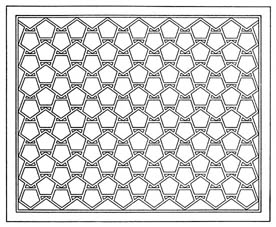
|
| Type II : parametric
shape grammar rules
Type II designs approach the generation of the ice-rays in a dynamic
manner. The rules essentially bisects any existing polygonal shape into
two polygonal shapes. Variations for this grammar typically consist of
changing the resultant shape from two shapes to many shapes that create
a triangular or rectangular shape towards the center.
|
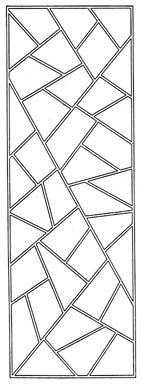
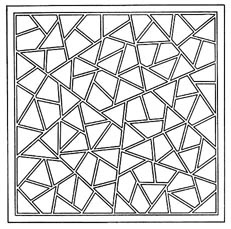
|
| Type III : constrainted
parametric shape grammar rules
Type III ice-rays are best described as hybrid between Type I and Type
II. These designs also use a grid but unlike Type I designs, the grid
is allowed to vary within certain specified constrains. The creation of
a new grid "square" is dependant on existing shapes.
|
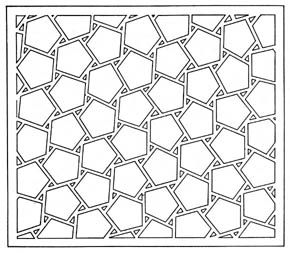
|
| Type IV : unknown
shape grammar rules
Some of the ice-rays in Dye's book seem to defy any known rule. I should
qualify that to say "any known rule to my knowledge". The sample to the
right is known as a prunus ice-ray due to the flower motif.
|
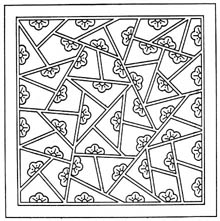
|
Notes on the Design Process:
One of the reaons why I did this project was to explore the relationship
between shape grammars and computer implementation. I found that there
are varying types of dependancy between the two fields. In making
Type-I rules, the rules came first and it was a logical progression to
make the computer do it because that's what it does best (copying and
mirroring). Type-II rules were also rather straight forward but it was
a different type of programming. The reason is that to make it an
expandable system where rules could be added at anytime, it would be
best to use a knowledge base system. But to make it an efficient
system, one where symbolic manipulations are kept to a minimum, the code
would have to generalize the situation and essentially lose its ability
to "know" what is a shape. Type-III rules were very much tied with the
computer implementation. There was a cycle of going back and forth
between the drawing and coding. This was most likely because the rules
for making such an ice-ray is not obvious and required hypothesizing and
testing those hypothesis on the computer.
Future Work:
Invent new rules to classify Type-IV ice-rays.
Create 3-D ice-rays.
haldane@mit.edu




